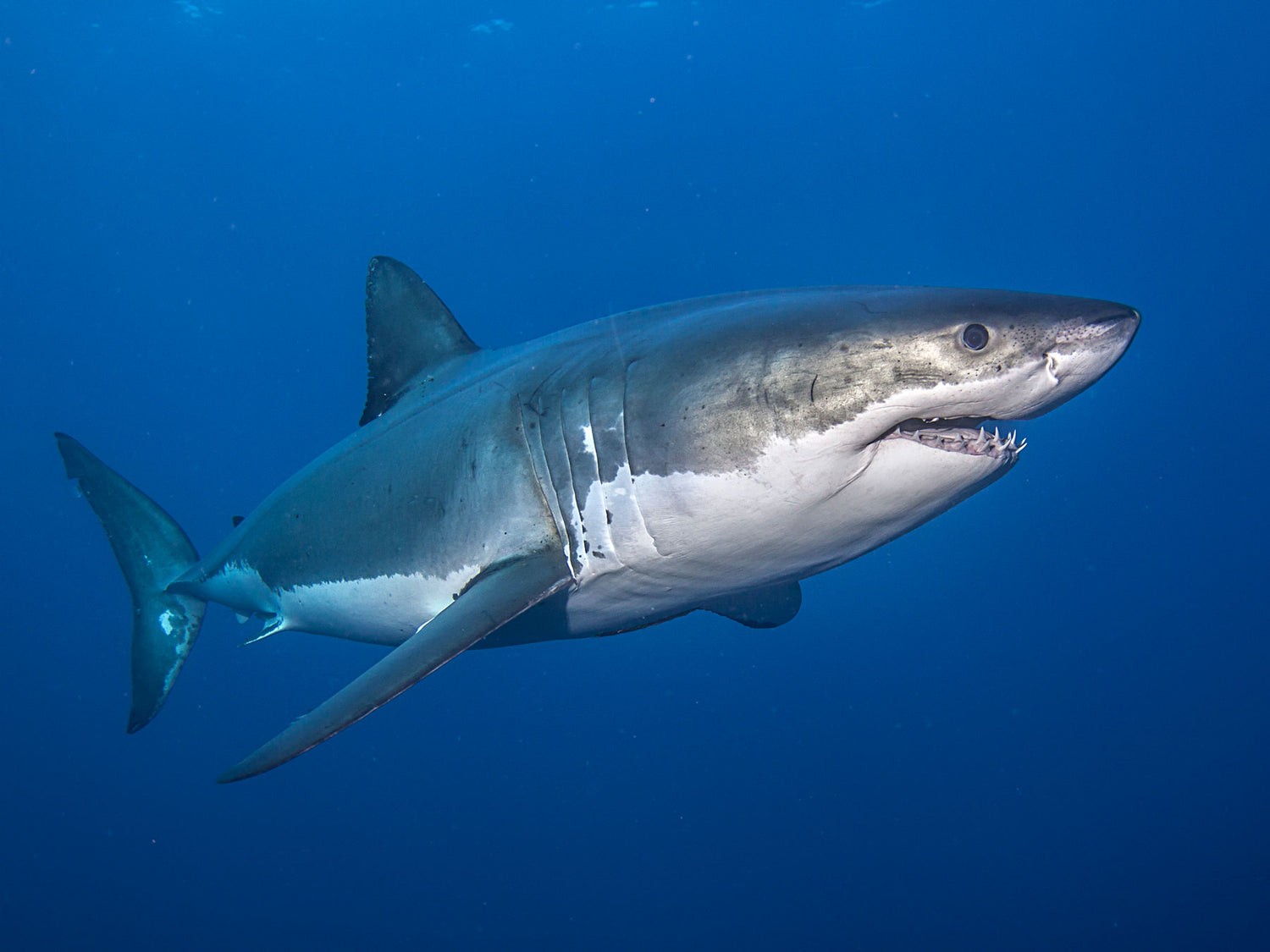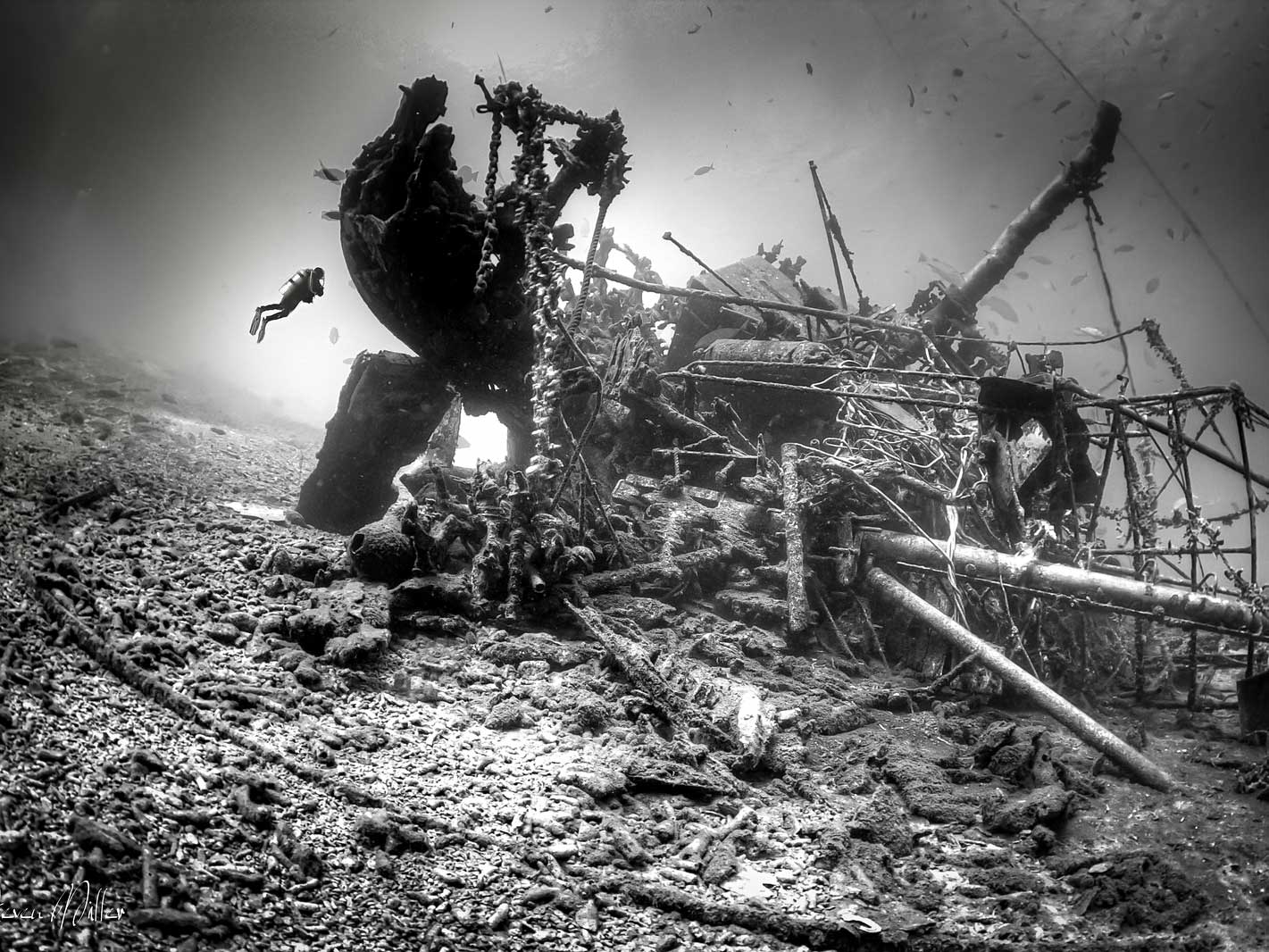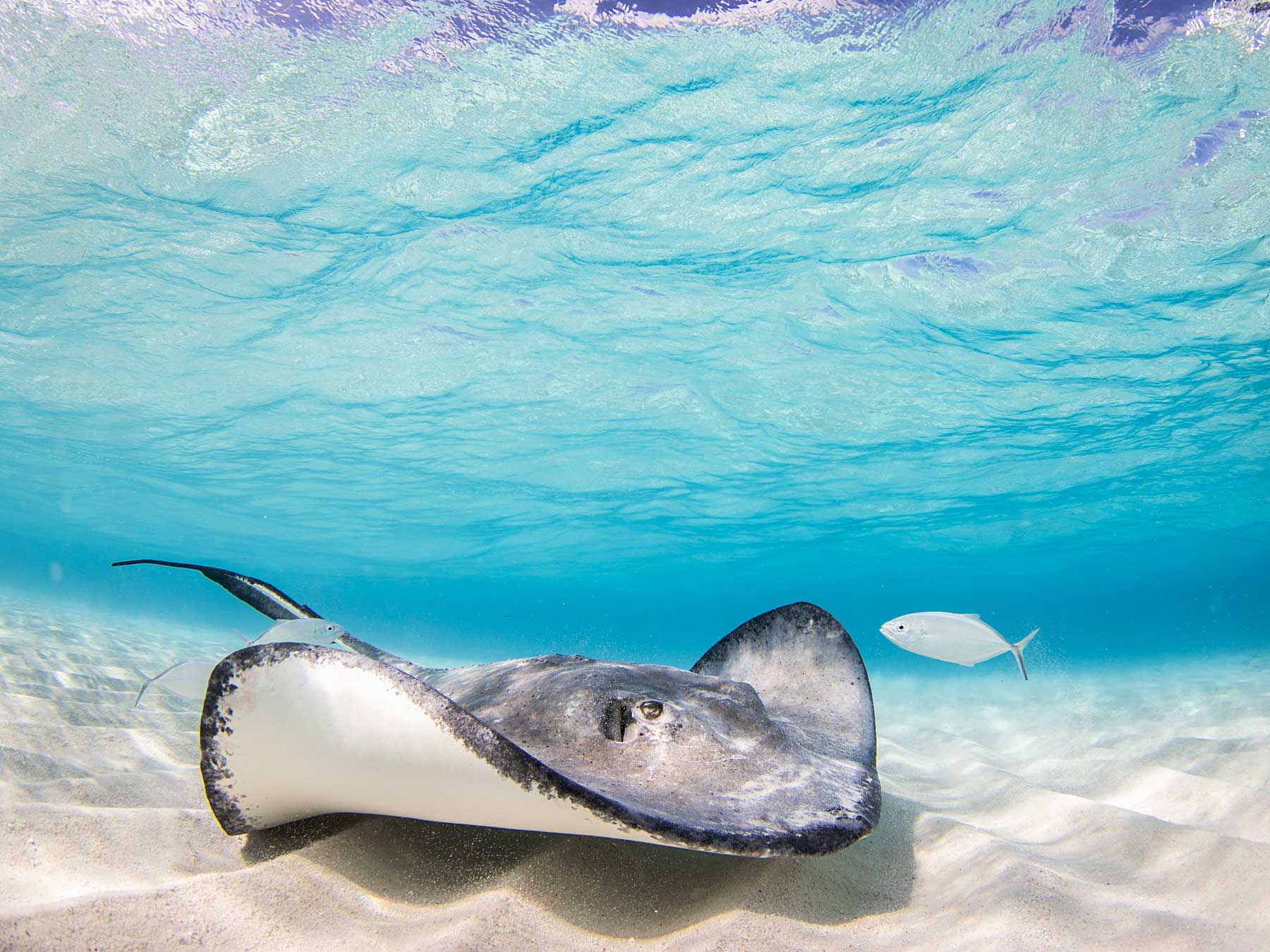If the lion is the king of the jungle, we think the great white must be king of the sea. These big beauties are mesmerizing with their massive size, graceful movement, and cold black eyes.
In the cage you'll generally be weighted heavily and breathing surface supply air from a suspended regulator. Dress warmly because most cage diving experiences are in cold water and you won't be moving a lot to stay warm.
Where
Most famously Guadalupe, Africa and Australia since we are mostly talking about Cage experiences.

Typically you're going to be viewing these beasts from the safety of a cage. Don't expect them to get too close to the cage unless they're baited.
DSLR + Mirrorless
ISO: 160-400 typically on a sunny day; this assumes nice blue water and a bright sun. If the water and/or sky are dark be prepared to go higher. If you are shooting natural light on a cloudy day you may want to consider Auto ISO.
Mode: Manual mode, particularly with flash; for natural light with fast action choose Shutter priority or even Program mode
Aperture: f/4 to f/11; use this to control the brightness of the water column
Shutter Speed: 1/160 to 1/250
Lens: Wide angle fisheye or rectilinear; 28mm lenses are great if the sharks are shy or not baited; Rectilinear preferred for more natural proportions
Point + Shoot
ISO: 200-800 depending on ambient light
Mode: Program mode if you are not using flash, just be sure the shutter speed is fast (you may be able to limit it in the camera's menus)
Aperture: f/8 to start; this will be based on the brightness around you. If you are panning sharks in all directions you might use several different apertures to suit the light
Shutter Speed: 1/125 or faster to avoid motion blur
Focal Length: Wide angle; with or without an external wide angle lens. You may need to zoom if the sharks don't get very close

Their bellies and teeth are bright white, but the top of them is perfectly camouflaged against the deep blue.
Technique
You need to know if the Sharks will be baited into close proximity of the cage. In some places this is not allowed. If you know they are "wrangling" with bait, then a super wide lens and two big flashes will fill the frame with mouth, and stop all of the motion for impact.
Without bait, you aren't going to get very close, so consider turning your strobes off and shooting natural light.
When shooting natural light, you may consider shooting manual (custom) white balance. Use a dive slate or even the bars of the cage or the back of your buddy's tank. Keep in mind that the white balance setting may need to changed depending on the direction you're shooting and ambient light. If clouds are passing over the sun, this will affect your white balance setting. We always recommend shooting RAW, and this is a situation where adjusting white balance in post can be very effective.
The way to get "the shot" is to get a lot of cage time and to be alert. Great whites are recognizable for their big, bright white bellies but when they're coming up from beneath- as they usually are- they can be virtually invisible until they're right next to you.
Strobes
When the sharks come in close you can actually shoot close focus wide angle (CFWA), with a stopped down lens and strong strobe power.
If they are far, you might find all your flash does is light up the backscatter (particles suspended in the water). Don't hesitate to turn them off in this situation.
If it's a little bit of both and your water is clear, set your camera to a slightly underexposed image (about 1/2 to 1 stop underexposed in the brighter parts of the water column) and have your strobes set to TTL. This way, if the shark drifts in close enough for the flash to hit then the TTL will quench it. If they are too far, you still have a decent natural light image to edit.
Additional Reading
Close Focus Wide Angle In Depth













